



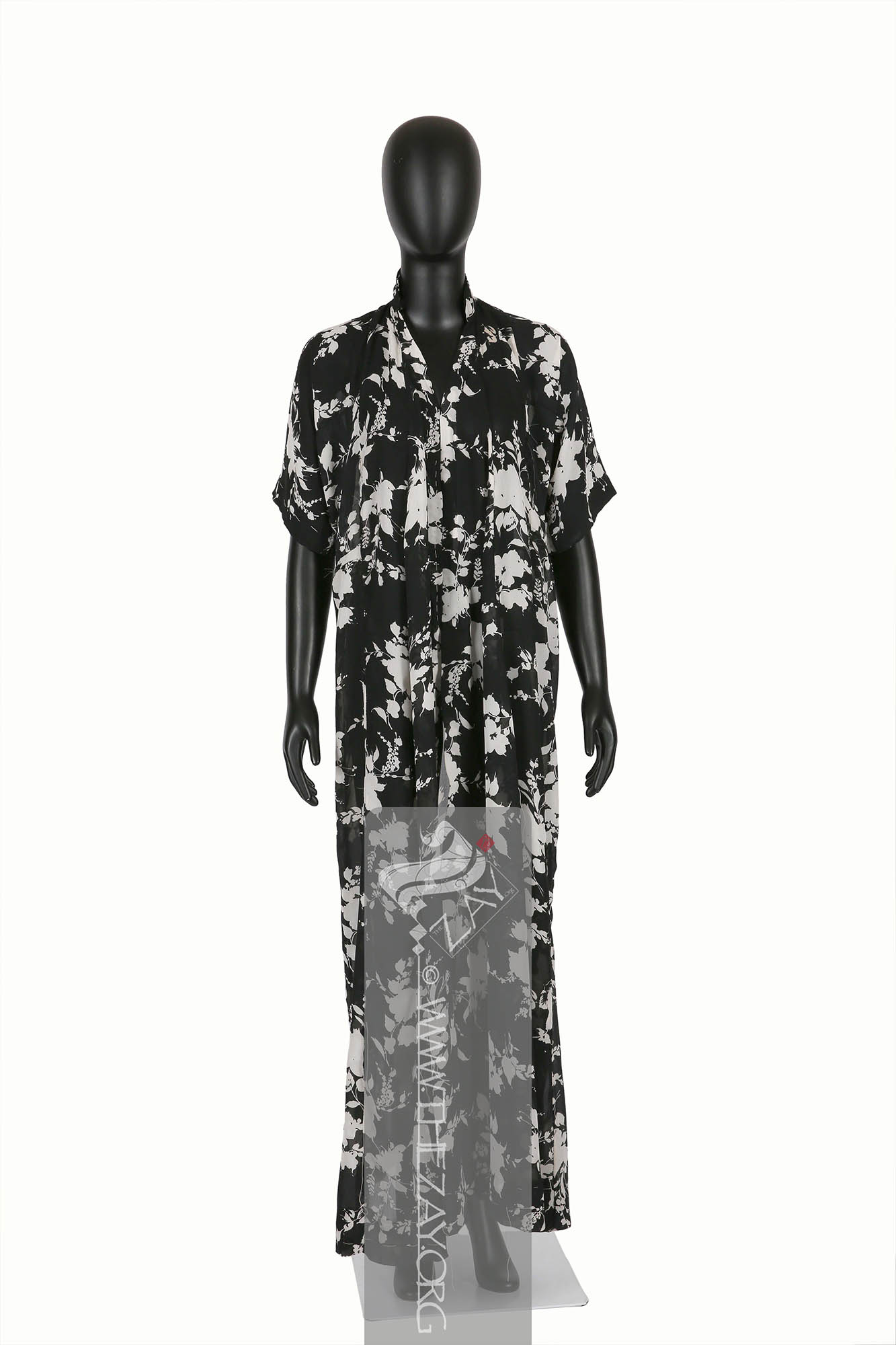
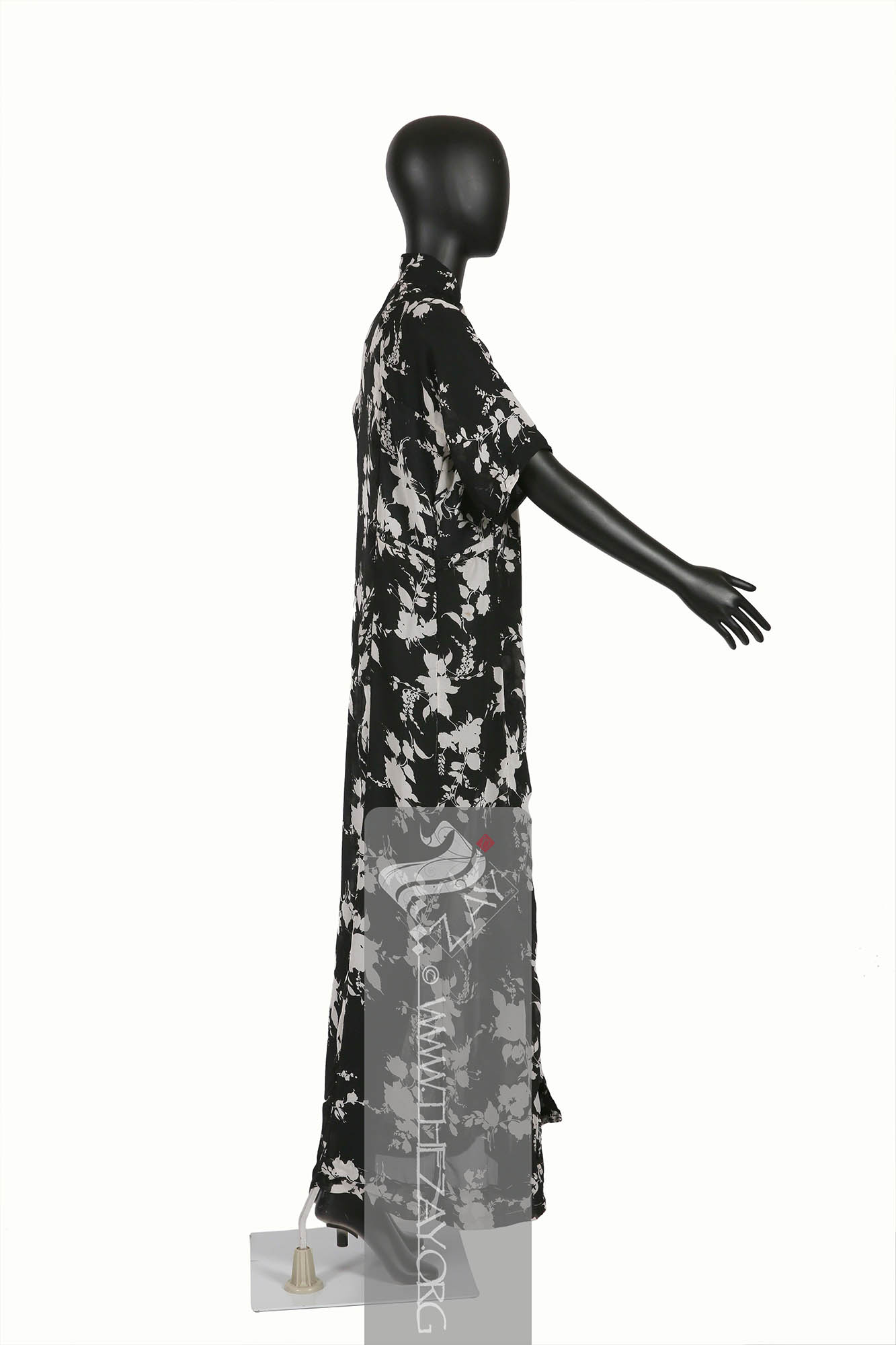
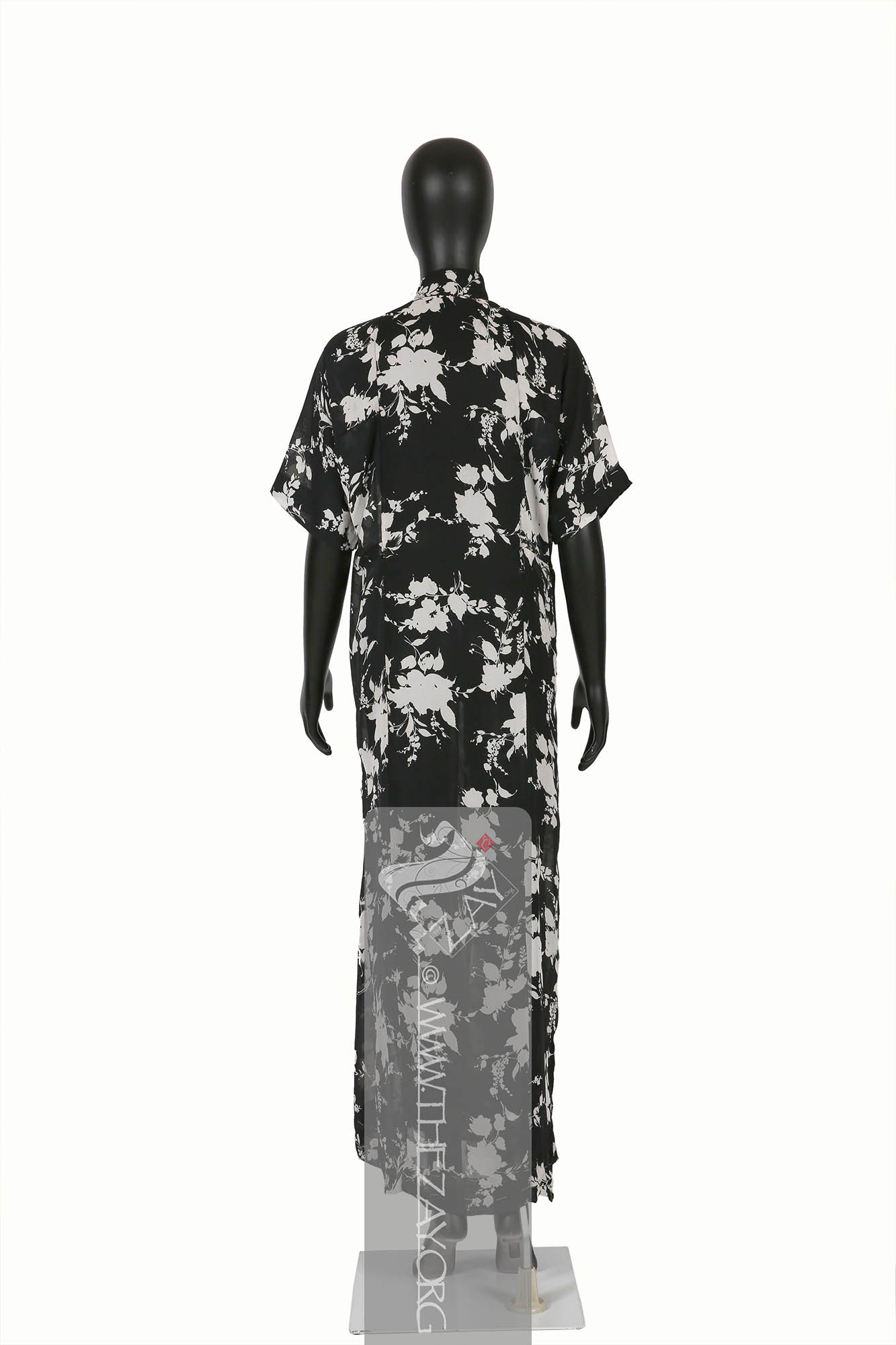
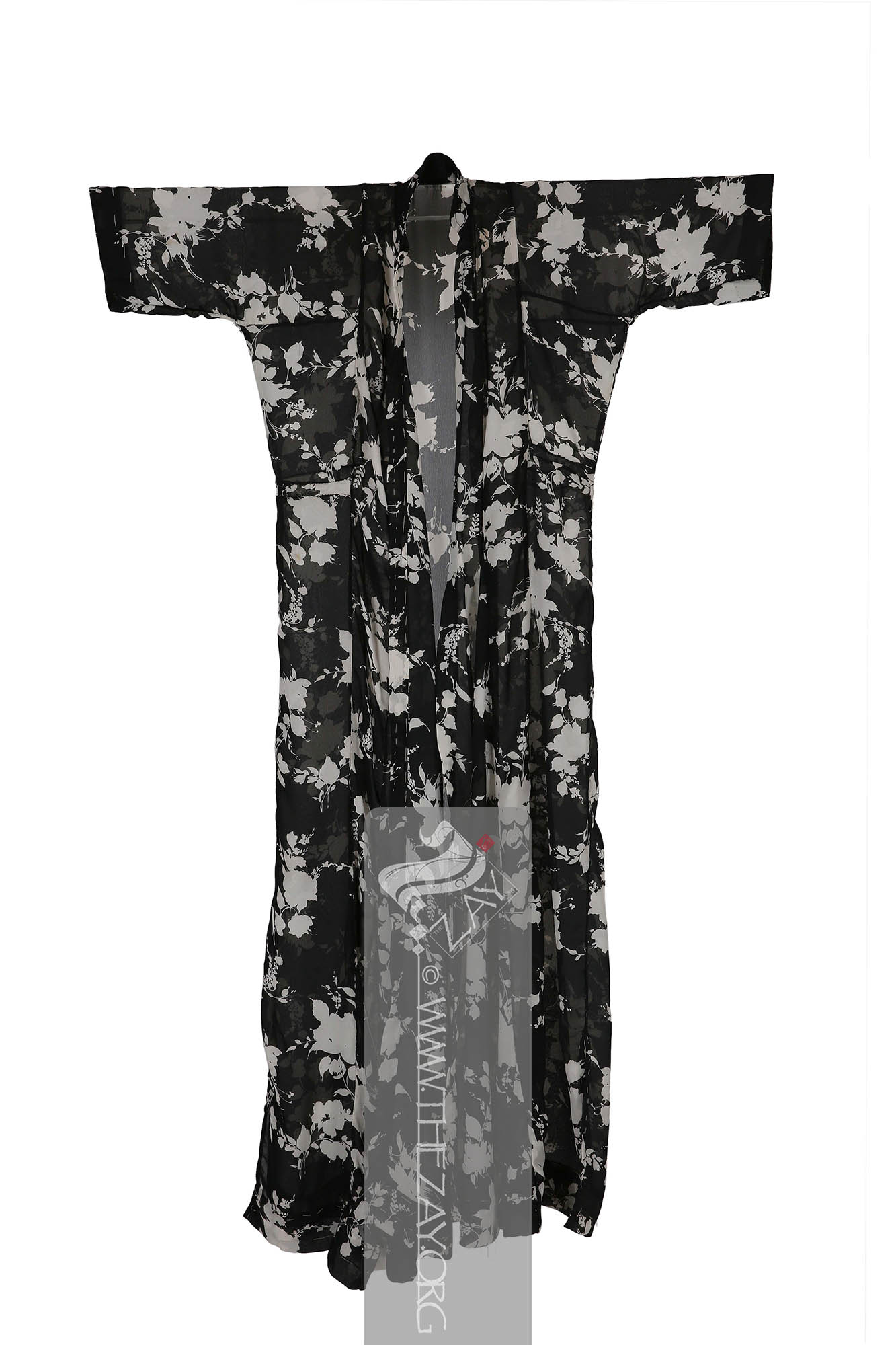

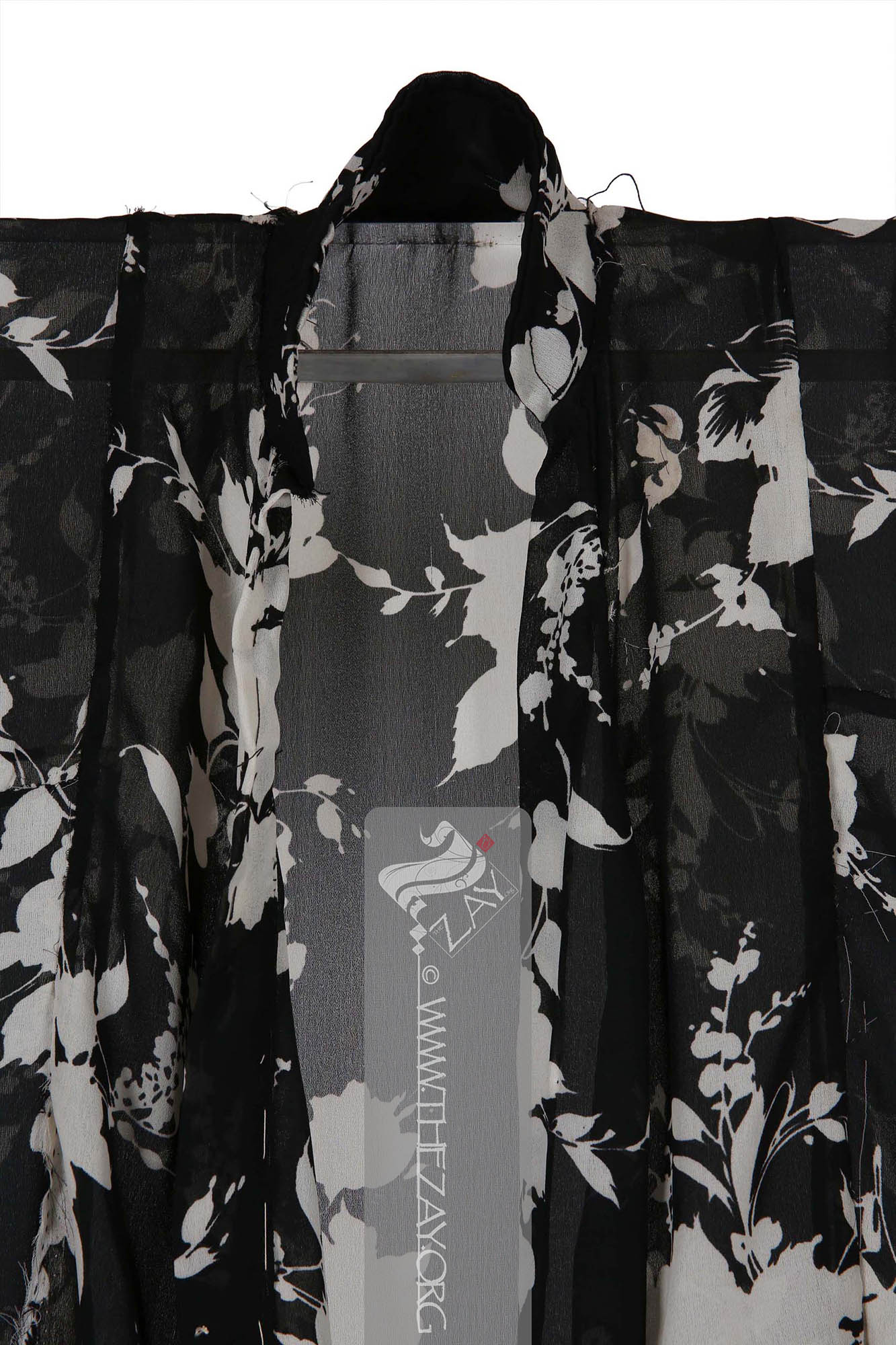
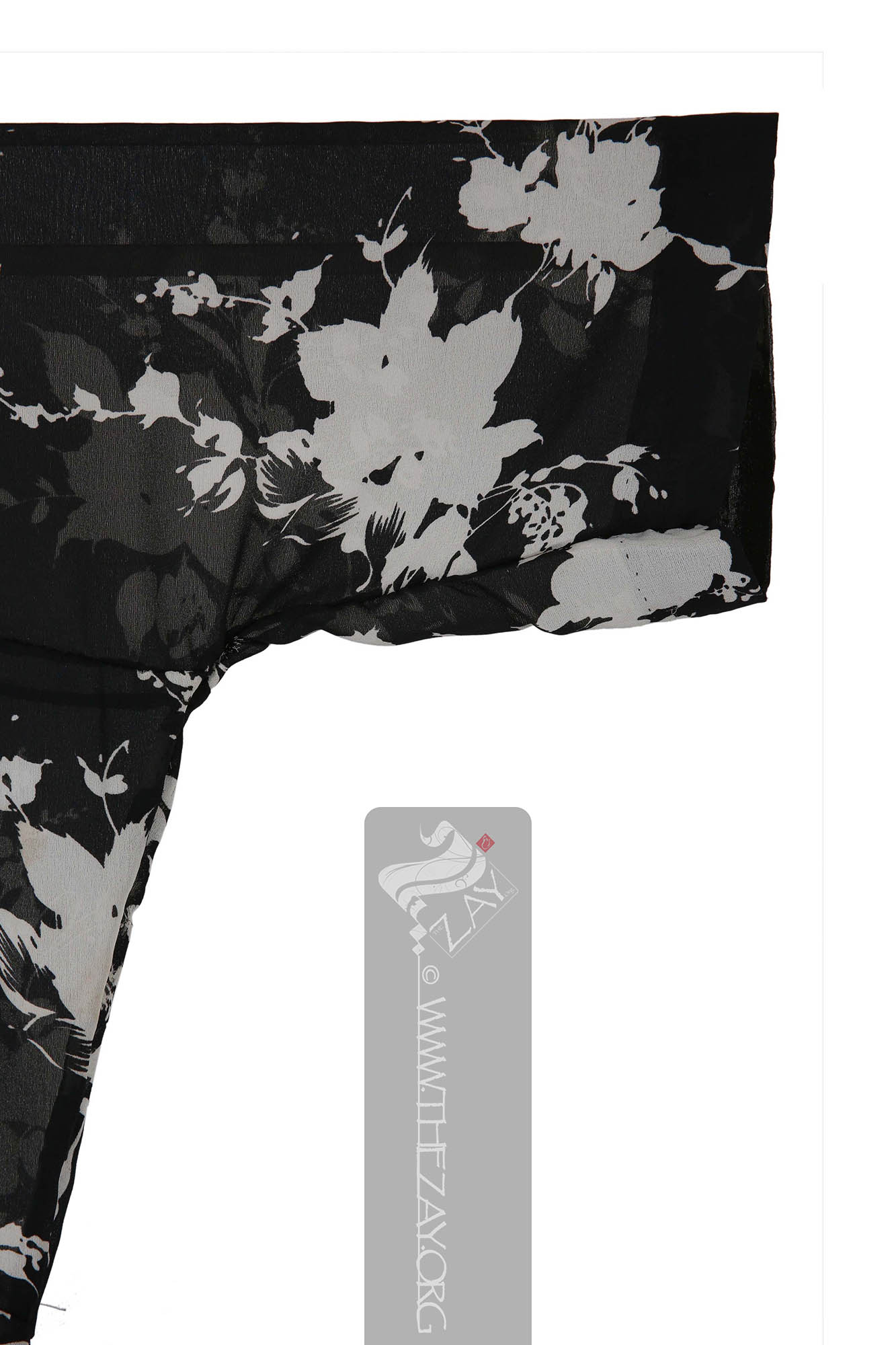
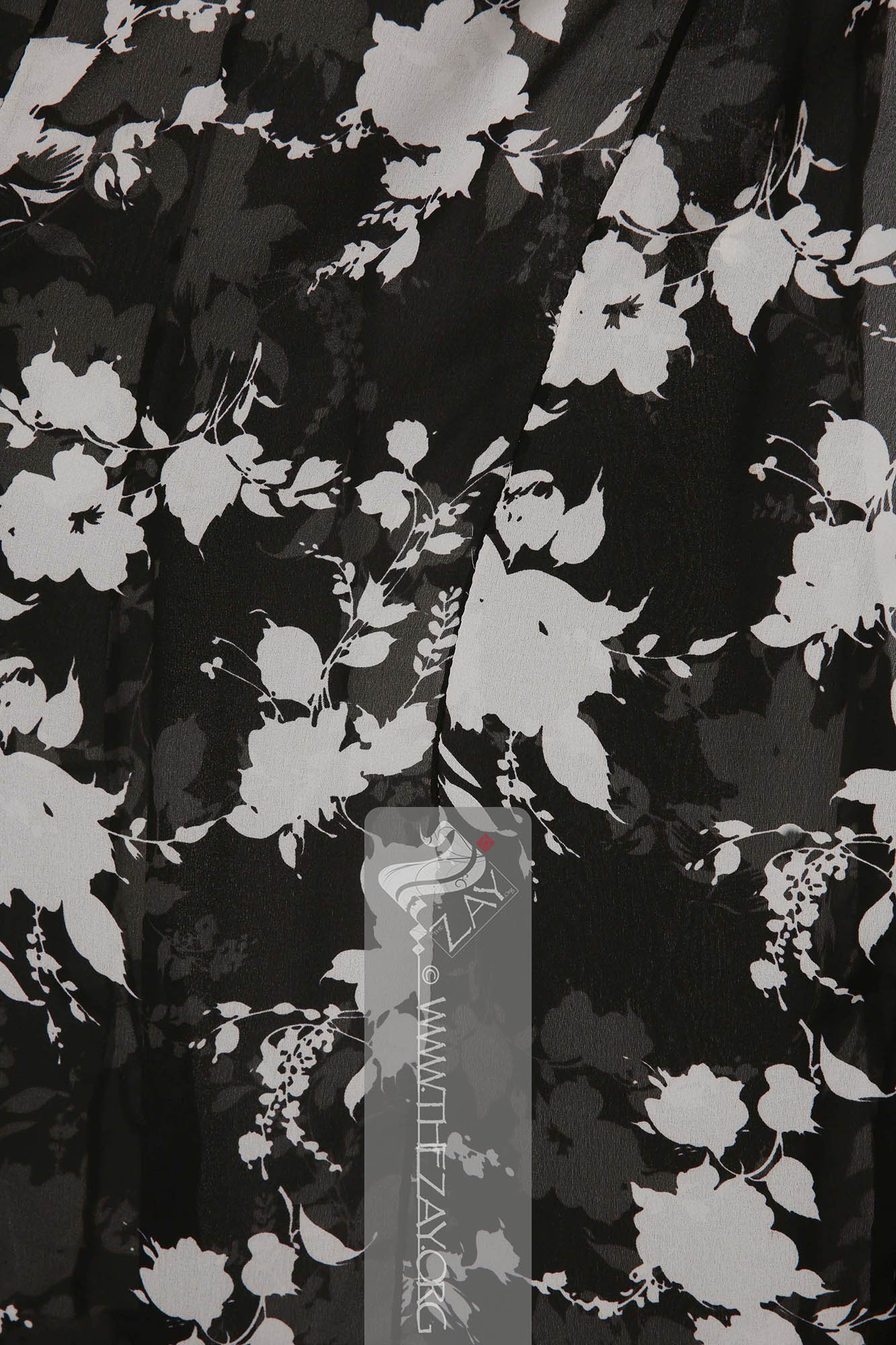

| Local Name | Sayah |
| Object Category | Overgarment |
| Gender | Female |
| Date of object | c. 20th century |
| Place Of orgin | Iraq |
| Region | Iraq |
| Object Range | Türkiye, Syria, Iraq, Lebanon, Kuwait, Palestine, Jordan, Saudi Arabia, Egypt, Sudan, Cyprus, Bulgaria, Romania, Moldova, Greece, North Macedonia, Croatia, Serbia, Bosnia Herzegovina, Kosovo, Armenia, Azerbaijan, Georgia, et al. |
| Dimensions | Length:140 cm Width: 92 cm |
| Materials | Silk |
| Technique | Hand Stitched Machine Stitched Print |
| Color | |
| Motif | Floral |
| Provenance | Gifted, Athbah Al Kalamchi, Italy 2019 |
| Location | The Zay Zay: (Arabic: costume, Pl. azyaā’), a set of clothes in a style typical of a particular country or historical period. Initiative |
| Status | In Storage |
| ZI number | ZI2019.500851 IRAQ |
Object History
This piece was gifted to Dr. Reem Tariq
Ṭariq: (Arabic; Synonym: tulle_bi_talli; talli; badla; khus_dozi ), series of small metal knots made on a woven net ground as embellishment. The term is commonly used in the Levant Arab region specifically in Lebanon. Ṭariq: (Arabic; Synonym: tulle_bi_talli; talli; badla; khus_dozi ), series of small metal knots made on a woven net ground as embellishment. The term is commonly used in the Levant Arab region specifically in Lebanon.
Sulafah al Zahawi was an Iraqi socialite who was renowned for her style and fashion. She is a descendant of the clan of the great Iraqi poet Jamil Sidiqi al Zahawi.
Born in Baghdad in 1929, to Dhafir Rashid al Zahawi, and his wife Najiyah Baban, she graduated with a BA in journalism from The American University Cairo in 1951-52. She married Mustafa Abdul Karim al Kalamchi in 1955 and bore him a son, Bashar al Kalamchi (Dr. Reem’s husband), and a daughter, Athbah al Kalamchi.
Though she only sang amongst friends and relatives, she was known for her immaculate voice, often compared to the renowned Arab diva Umm Kalthum, who was a personal friend of hers. She passed away and was buried in Italy in 2006.
Object Features
This is a woman’s front-open silk (georgette
Georgette: (French: Georgette de la Plante – a famous dressmaker), a lightweight, sheer fabric with a dull crimpled surface. It is usually made of silk but can also be made of synthetic fibers. Georgette was first introduced in the early 20th century and was named after the French dressmaker. ) robe (sayah
Ṣāyah: (Classical Persian: sāya – shadow; Synonyms: zubūn, qumbāz, gombaz
Gombaz: (Arabic; Synonyms: sayah, zubūn, qumbāz, yalak
Yalak: (Ottoman Turkic: yelek – a hip or waist length vest; from Old Anatolian: yélek – Vest), a short-sleeved waistcoat traditionally worn by men and a long outer robe or tight jacket either sleeveless or short sleeved with a tight bodice traditionally worn by women in the Ottoman controlled Levant. Yalak: (Ottoman Turkic: yelek – a hip or waist length vest; from Old Anatolian: yélek – Vest), a short-sleeved waistcoat traditionally worn by men and a long outer robe or tight jacket either sleeveless or short sleeved with a tight bodice traditionally worn by women in the Ottoman controlled Levant. Ṣāyah: (Classical Persian: sāya – shadow; Synonyms: zubūn, qumbāz, gombaz
Gombaz: (Arabic; Synonyms: sayah, zubūn, qumbāz, yalak
Yalak: (Ottoman Turkic: yelek – a hip or waist length vest; from Old Anatolian: yélek – Vest), a short-sleeved waistcoat traditionally worn by men and a long outer robe or tight jacket either sleeveless or short sleeved with a tight bodice traditionally worn by women in the Ottoman controlled Levant. Yalak: (Ottoman Turkic: yelek – a hip or waist length vest; from Old Anatolian: yélek – Vest), a short-sleeved waistcoat traditionally worn by men and a long outer robe or tight jacket either sleeveless or short sleeved with a tight bodice traditionally worn by women in the Ottoman controlled Levant.
The printed floral and foliage repeat patterns in white over a black base on the field of the sayah
Ṣāyah: (Classical Persian: sāya – shadow; Synonyms: zubūn, qumbāz, gombaz
Gombaz: (Arabic; Synonyms: sayah, zubūn, qumbāz, yalak
Yalak: (Ottoman Turkic: yelek – a hip or waist length vest; from Old Anatolian: yélek – Vest), a short-sleeved waistcoat traditionally worn by men and a long outer robe or tight jacket either sleeveless or short sleeved with a tight bodice traditionally worn by women in the Ottoman controlled Levant. Yalak: (Ottoman Turkic: yelek – a hip or waist length vest; from Old Anatolian: yélek – Vest), a short-sleeved waistcoat traditionally worn by men and a long outer robe or tight jacket either sleeveless or short sleeved with a tight bodice traditionally worn by women in the Ottoman controlled Levant.
It has a thick western style collar spanning half the neck and displays short slits on the sides. The piece has no fastening or lining and is partially machine and hand-stitched.
Iraq, located south of Türkiye, was a significant Arab territory under the rule of the Ottoman Empire for approximately four centuries. In the northern province of Mosul, which was then under Ottoman rule, the prevalent modes of dress were heavily influenced by the fashion trends originating in Istanbul.
By the 1930s, the elites of Baghdad, as well as other urban Christian and Jewish communities, had fully transitioned from Ottoman attire to European-style clothing. However, among the urban Muslim elites and middle classes, the shift towards Westernised clothing occurred more gradually, the vestiges of which are seen through pieces like these, which are essentially from a decade or two later.
Links
Charuga: (Possibly Kurdish), a mantle-like embroidered women’s traditional garment from the Qaraqosh region in northern Iraq, traditionally fastened at the shoulder. Historically worn by field workers, it helped conceal dust and dirt, making them less visible during labour, it is a festive garment worn sparingly during festivals and other special occasions.
from Northern Iraq Has Arrived at the TRC!, www.trc-leiden.nl/trc/index.php/en/blog/1378-the-charugaCharuga: (Possibly Kurdish), a mantle-like embroidered women’s traditional garment from the Qaraqosh region in northern Iraq, traditionally fastened at the shoulder. Historically worn by field workers, it helped conceal dust and dirt, making them less visible during labour, it is a festive garment worn sparingly during festivals and other special occasions.
-from-northern-iraq-has-arrvied-at-the-trc. Accessed 29 Jan. 2024.